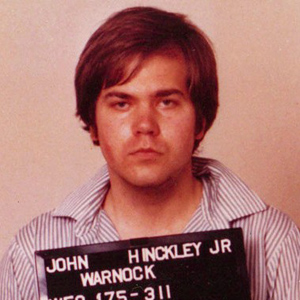Reagan shooter John Hinckley Jr. should be released from psychiatric hospital, judge rules

John Hinckley Jr.’s 1981 mug shot from the FBI.
The man who tried to kill President Ronald Reagan in 1981 should be released from a psychiatric hospital, a federal judge has ruled.
U.S. District Judge Paul Friedman of Washington, D.C., ruled on Wednesday that John Hinckley Jr. is no longer a danger to himself or others, the Washington Post reports. Friedman’s order (PDF) said Hinckley should be released on “full-time convalescent leave” beginning on or after Aug. 5.
Hinckley’s release is subject to several conditions, but they could be phased out if there are no violations. If he fails to abide by them, he could be returned to the hospital.
Hinckley, 61, has had no symptoms of active mental illness since he last attempted suicide in 1983, Friedman wrote in an opinion (PDF). He has shown no violent behavior and shown no interest in weapons, Friedman said.
Hinckley was 25 years old when he shot and wounded President Reagan, press secretary James Brady, Secret Service agent Tim McCarthy and police officer Thomas Delahant. Brady was paralyzed as a result of the attack. Hinckley claimed the shootings were motivated by his desire to impress actress Jodie Foster. Hinckley was found not guilty in the shootings by reason of insanity.
Hinckley will live with his mother in Williamsburg, Virginia, for the first year of his release. He must stay within 30 miles of that location when traveling alone or when he isn’t visiting doctors, and must carry a GPS-enabled cellphone with him. He is not allowed to create social media accounts and to upload content to the internet without authorization, and may not erase his browser history. He should participate in structured activities, such as volunteer or paid work, at least three days a week. He will also be subject to a treatment plan that includes music therapy. He may not speak with the media, and may have no contact with Jodie Foster and with his surviving victims or their families.
Friedman rejected prosecutors’ requests for Hinckley to wear an ankle monitor or to equip his car with a GPS device. According to Friedman, there is no indication Hinckley is a flight risk and his doctors believe the restrictions are not clinically indicated.
Hinckley has been allowed to leave the hospital for supervised visits with family members wince the 1990s, and his lawyer has sought his full-time release since 2003, according to the Washington Post. In the last seven years, Hinckley visited his mother 60 times for periods of 10 or 17 days, Friedman said. Hinckley has also volunteered at a mental-health hospital and at a Unitarian Universalist Church, which recently offered him a paid position. The Secret Service has apparently tracked Hinckley during visits.
Prosecutors have argued Hinckley’s release was a calculated risk because of his deceptive behavior, according to the Washington Post story. Twice in 2011, Hinckley told doctors he went to a movie, when he actually went to a bookstore and a fast-food restaurant. A Secret Service agent reported that Hinckley stood near books about the Reagan shooting.
Another time, in 2015, Hinckley was scheduled to visit a former Look Magazine photographer with a friend, but the photographer became ill, and Hinckley actually visited a different person without first notifying his doctors. He did, however, disclosed the change the next day.
A psychiatrist for the government agreed that Hinckley is ready for full-time convalescent leave, but argued he should be subject to more monitoring. He did not agree with government proposals, however, for the ankle bracelet and the placement of a GPS device on Hinckley family vehicles.



